Top 10 Most Beautiful Historical Sites in Iran
Iran is filled of ancient treasures as the ruins of an empire that once encompassed practically the whole continent from Greece to China. Because of the ... read more...country's present political status, it is not a popular tourist destination, and as a result, many of these natural treasures remain hidden from the rest of the world. The 10 sites listed below, like every historical structure, have a rich history within their walls. Iran's history, on the other hand, is extremely complicated, with dynasties and emperors whose impact spread well beyond modern-day Iran. Here is a list of some of the most beautiful historical sites in Iran that you should see.
-
The Shah Mosque is one of the most beautiful historical sites in Iran. On the south side of Naghsh-e Jahan Square, it is positioned. It was erected under the orders of Shah Abbas I of Persia during the Safavid era.
A room adorned in stunning blue and yellow mosaics - known as Shah Mosque until being renamed Imam Mosque after the 1979 Revolution - is the one architectural monument that appears in the great majority of Iran tourist publications. Of course, it's renowned for a reason, which is why it's at the top of our list. You may spend an entire day going about the mosque, admiring its intricate intricacies and uncovering its mysteries. Standing beneath the main dome's center, on a little plaza distinguished by the fact that it is formed of a distinct sort of stone, is an experience not to be missed.
It is considered one of the greatest works of Persian architecture from the Islamic period. The Royal Mosque, together with Naghsh - e Jahan Square, has been designated as a UNESCO World Heritage Site. Its construction began in 1611, and the elegance of its seven-color mosaic tiles and calligraphic inscriptions contribute to its opulence.
Location: Isfahan, Iran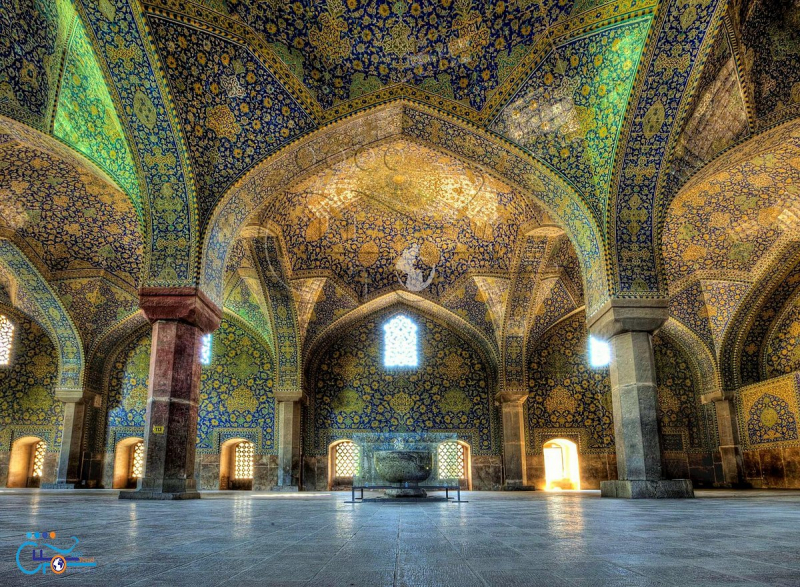
Photo: www.tripadvisor.com.vn 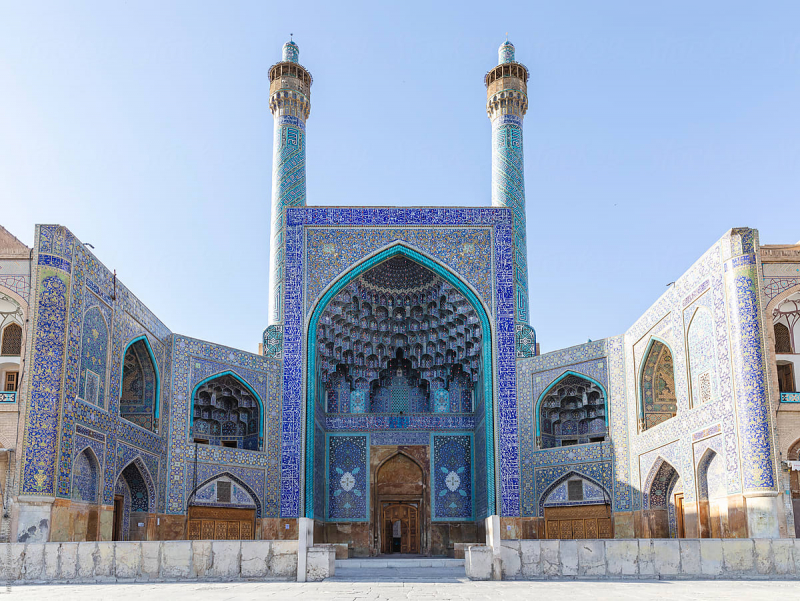
Photo: www.stocksy.com -
The Grand l Qp or Ali Qapu Palace is an imperial palace in Isfahan, Iran. It lies on the western side of Naqsh-e Jahan Square, just across from Sheikh Lotfollah Mosque. The palace was the official home of the Safavid dynasty's Persian Emperors. Due to its cultural and historical significance, UNESCO designated the Palace and Square as a World Heritage Site. The palace is 48 meters tall and has six stories, each of which is reached through a steep spiral staircase.
The Ali Qapu Palace is literally covered in layers of architecture and time. The structure was constructed in sections, beginning with a compact cubic entry and then extending with a "upper hall" that added two floors above the entrance. On top of that, the Music Hall was built, followed by the broad eastern veranda that opened up to the square. Finally, 18 wooden columns with a wooden ceiling were added to the veranda.
Location: MM4G+VM9, Isfahan, Isfahan Province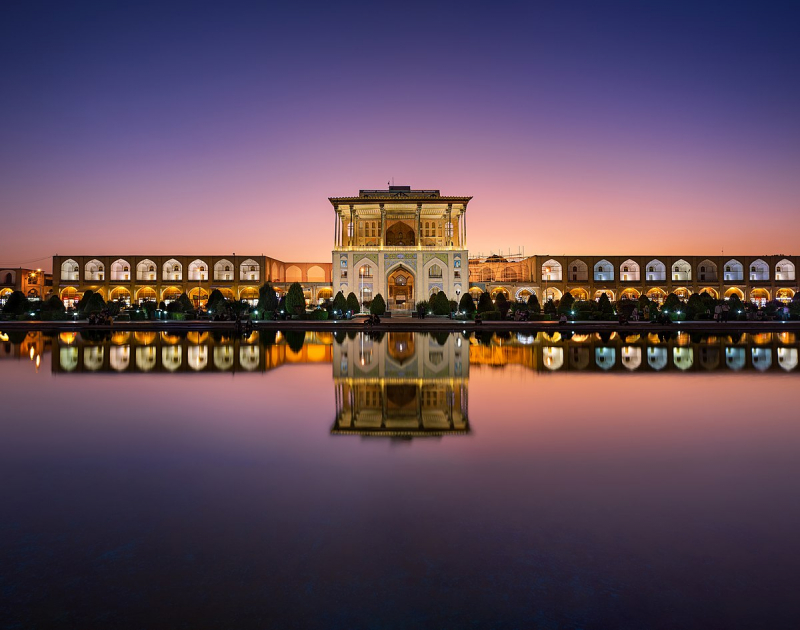
Photo: Wikipedia Video: pandorama360 - [ virtual reality travel ] -
The Pink Mosque, also known as the Nasir ol Molk Mosque, is a classic Shiraz mosque and this is one of the most beautiful historical sites in Iran. It is close to the Shh Chérgh Mosque. It was constructed during the reign of Iran's Qajar dynasty.
The mosque's front has a lot of colored glass, as well as traditional components like the Panj Kse ("five concave") pattern. If you only visit one place in Iran, make it the Nasir ol Molk (or "Pink") Mosque in Shiraz. It's a peaceful and humbling experience to be in the silent chamber as the sun rises and shines through the colorful glass. Although the Nasir ol Molk Mosque rapidly fills up with visitors clicking photos, zipping up their sweaters, and coughing in the dry air, having a few moments to oneself in the early hours of the morning is what makes it worthwhile to come. It makes it possible to perceive the intimate, inner space that it was designed to create. For the time being, if Shiraz feels too far away, you may view the city from a virtual 360-degree perspective here.
Location: Fars Province, Shiraz, Lotf Ali Khan Zand St, JG5X+C9H, Iran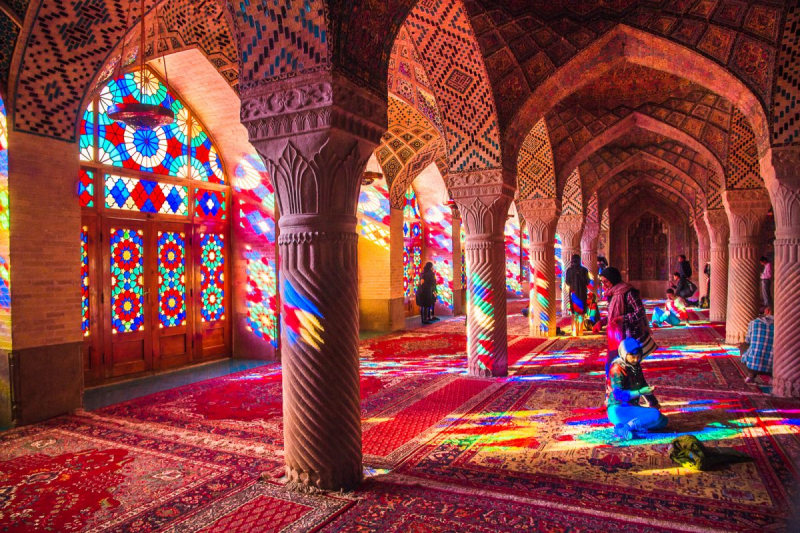
Photo: https://www.omnivagant.com/ Video: Great Big Story -
The Golestan Palace, also known as the Gulistan Palace and Rose Garden Palace, is a historic royal Qajar complex in Tehran, Iran's capital city.
The Golestan Palace, one of Tehran's oldest historic sites and a UNESCO World Heritage Site, is part of a complex of royal structures that were originally surrounded inside the mud-thatched walls of Tehran's capital ("citadel"). Gardens, royal structures, and exhibits of Iranian crafts and European gifts from the 18th and 19th centuries make up the museum.
The Golestan Palace is a collection of 17 structures that were previously encompassed inside the "arg" or citadel walls of Tehran and include gardens, Iranian craftwork, and historic royal buildings. Almost bulk of the constructions date from the Qajar Dynasty, which ruled from 1797 until 1834. Unfortunately, during Reza Shah's reign from 1925 to 1945, a great number of the structures were demolished because he believed that the city's historic architecture should not obstruct its new development.
Location: Tehran District 12 Panzdah-e-Khordad St Fifth Khordad Avenue Arg Sqr،, Iran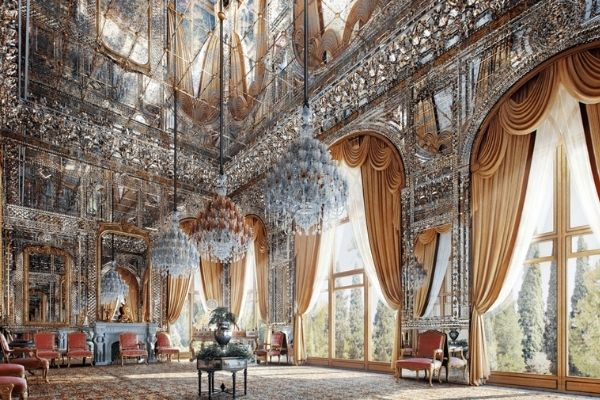
Photo: https://www.irantravelingcenter.com/ Video: Soheil Callage -
Persepolis, often known as the ceremonial capital of the Achaemenid Empire (c. 550–330 BC), is one of the most beautiful historical sites in Iran. It is located in the Marvdasht plains, which are surrounded by Iran's southern Zagros mountains. Shiraz is located 60 kilometers (37 miles) southwest of the Persepolis ruins. Persepolis' oldest ruins date back to 515 BC. It is a superb example of Achaemenid architecture. In 1979, UNESCO designated the Persepolis remains as a World Heritage Site.
The structure is elevated on a walled platform, with five "palaces," or halls, of various sizes and spectacular entrances. The purpose of Persepolis is still a mystery. It was not one of Persia's, let alone the empire's, greatest towns, but it appears to have been a huge ceremonial complex that was only occupied periodically; the location of the king's private chambers is still unknown. Most archaeologists believed it was used primarily for celebrating Nowruz, the Persian New Year, which falls on the spring equinox and is still an important yearly event in modern Iran, until recent challenges.
Location: Marvdasht, Fars, Iran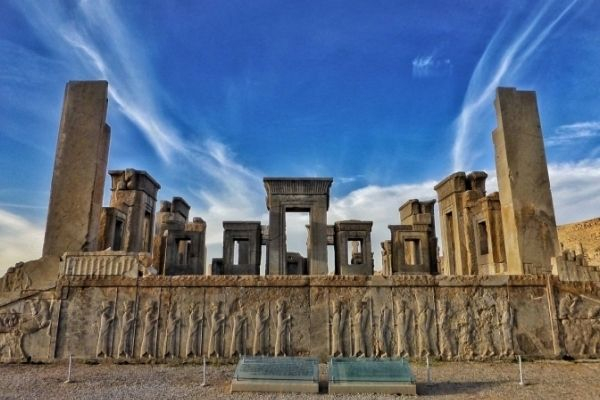
Photo: travelmag.vn 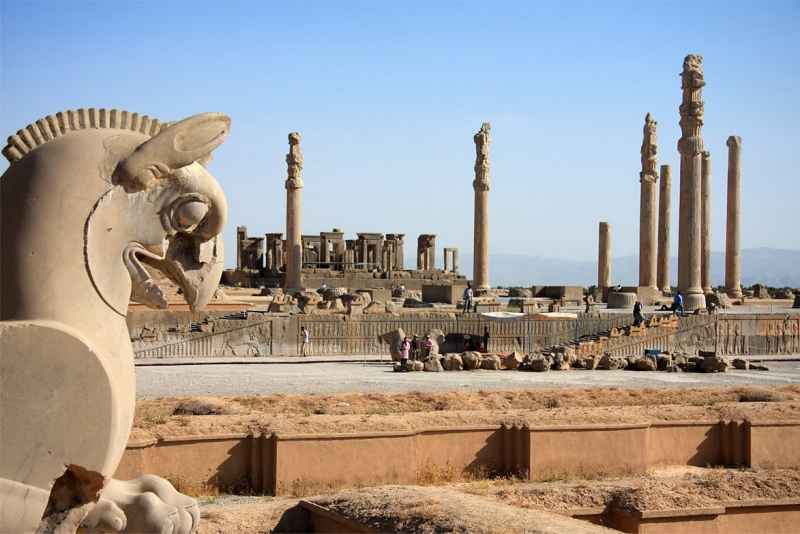
Photo: tripadvisor.com.vn -
Yazd, historically known as Yezd, is the capital of Iran's Yazd Province. It is home to some of the country's most beautiful historical sites. Esfahan lies 270 kilometers (170 miles) southeast of the city. The population was 1,138,533 at the 2016 census, making it Iran's eighth biggest city. UNESCO has designated Yazd's old city as a World Heritage Site since 2017.
Because of its long history of bike riders and the largest number of bicycles per capita in Iran, Yazd is also known as the "City of Bicycles." Bicycle culture in Iran is said to have begun in Yazd in the past century as a result of contact with European visitors and tourists.Yazd is littered with ancient single-story mud-brick buildings tucked away along tiny alleyways, creating a maze-like city structure that was designed to deceive potential assailants. In order to cool down the structures and enhance air circulation, most residences include an interior courtyard, frequently with a small pond.
Location: Yazd , Iran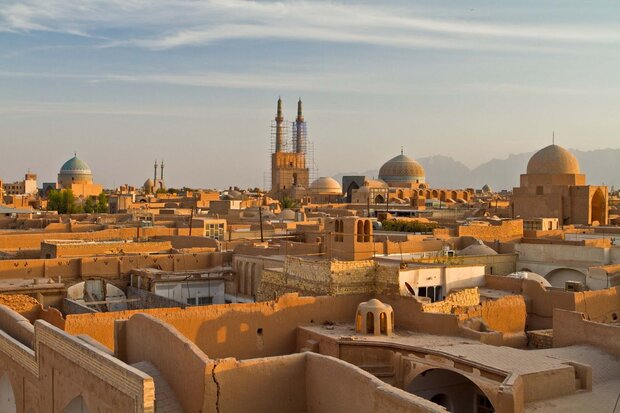
Photo: Tehran Times 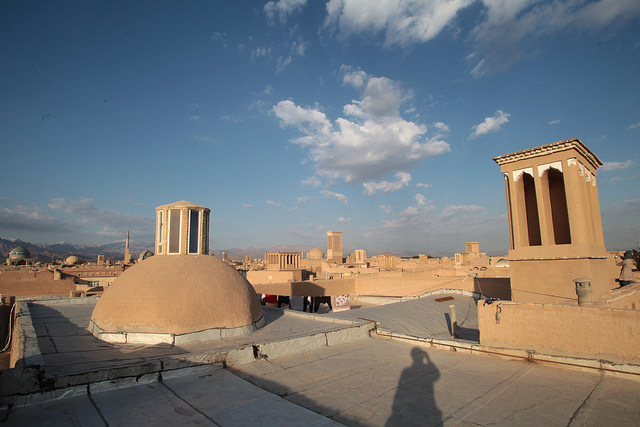
Photo: gianker.weebly.com -
Naqsh-e Rostam is an ancient archeological site and necropolis in Fars Province, Iran, about 12 kilometers northwest of Persepolis. The mountain includes the ultimate burial site of four Achaemenid rulers, including King Darius the Great and his son, Xerxes, as well as a collection of ancient Iranian rock reliefs.
This site is significant in Iran's and Iranians' history since it has many archeological sites carved into the rock wall across millennia, from the Elamites and Achaemenids to the Sassanians. It is a few hundred meters from Naqsh-e Rajab and has four more Sassanid rock reliefs, three of which depict rulers and one of which depicts a high priest.
With four enormous tombs built high into the cliff face, Naqsh-e Rostam is the necropolis of the Achaemenid dynasty (c. 550–330 BC). The facades include large panels over the doorways, each very similar in content, with figures of the king being invested by a god, above a zone with rows of smaller figures bearing tribute, with soldiers and officials, and above a zone with rows of smaller figures bearing tribute, with soldiers and officials.
With its ancient grandeur, it's easy to see why the Naqsh-e Rustam Necropolis is one of Iran's most beautiful historical sites.
Location: Marvdasht, Fars Province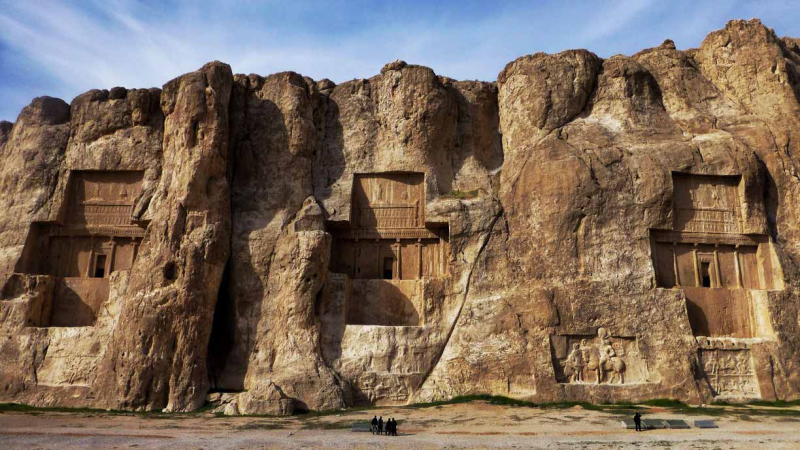
Photo: irandoostan.com 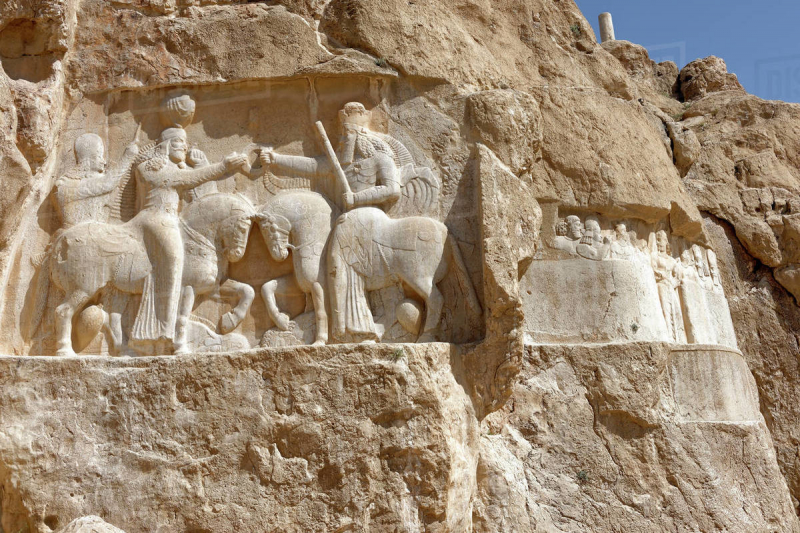
Photo: www.iransafar.co -
Built between 1879 and 1886, Qavam Mansion is a classic and historical house and garden in Shiraz, Iran. The structure has been restored to reflect the elegance and refinement enjoyed by upper-class households in the nineteenth century. The paintings on the house's low ceilings are Victorian-era European in style. The mirrored porch was the house's center point, looking out over a modest garden with fountains, date palms, and floral plants.
The structure, which is mostly formed of bricks, stands two meters above the yard. It has ornate architecture with paintings, stucco, wood carving, stone carving, tile work, and mirror work, among other Persian arts. It comprises of a stone porch (iwan) with magnificent ornamentation on the ceiling and walls. There are also symmetrically designed rooms on both sides of the porch. The structure is surrounded by a stone pool, date and sour orange trees, and palm trees, all of which are typical of Persian gardens. A variety of colored glasses may be found in the monument's basement. It was meticulously designed and constructed to create a cool environment during Shiraz's scorching summer days.
Location: Fars Province, Shiraz, Lotf Ali Khan Zand St, Iran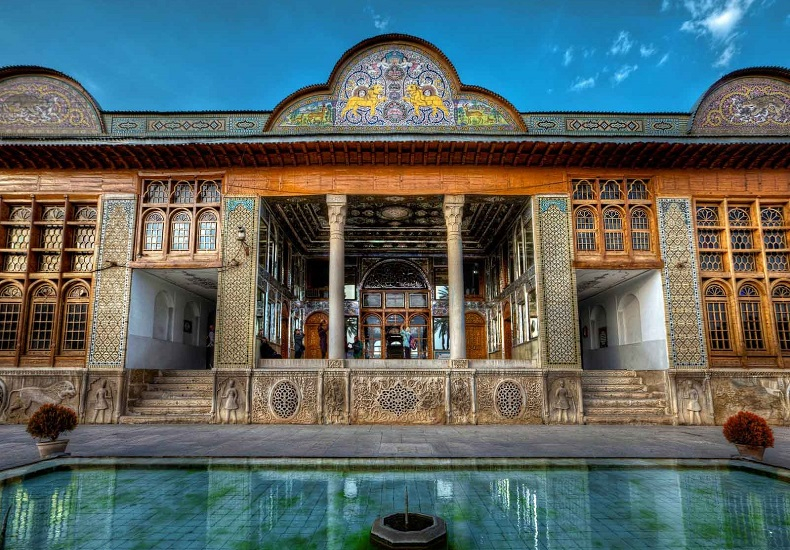
Photo: irannegintravel.com 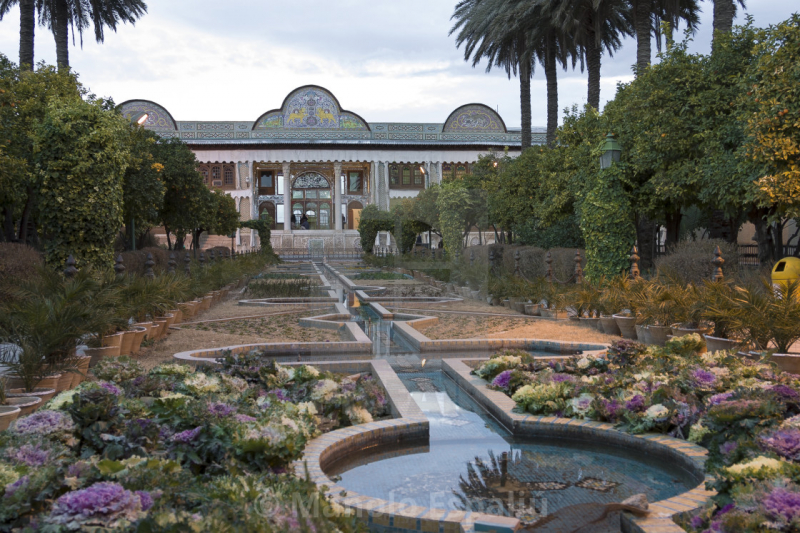
Photo: www.picfair.com -
A dakhma, also known as a Tower of Silence, is a circular, elevated structure created by Zoroastrians for excarnation (the exposing of human corpses to the elements for decomposition) in order to avoid pollution of the soil and other natural elements. The meat is eaten by carrion birds, such as vultures and other scavengers. Skeletal remains are gathered in a central pit, where they will continue to weather and decompose.
The finding of ossuaries dating from the 5th and 4th centuries BCE in both Eastern and Western Iran suggests that bones were occasionally segregated, although separation by ceremonial exposure cannot be assumed: burial mounds with remains wrapped in wax have also been discovered. Non-exposure is also suggested by the tombs of the Achaemenid rulers at Naqsh-e Rustam and Pasargadae, at least until the bones could be recovered.
Location: Iran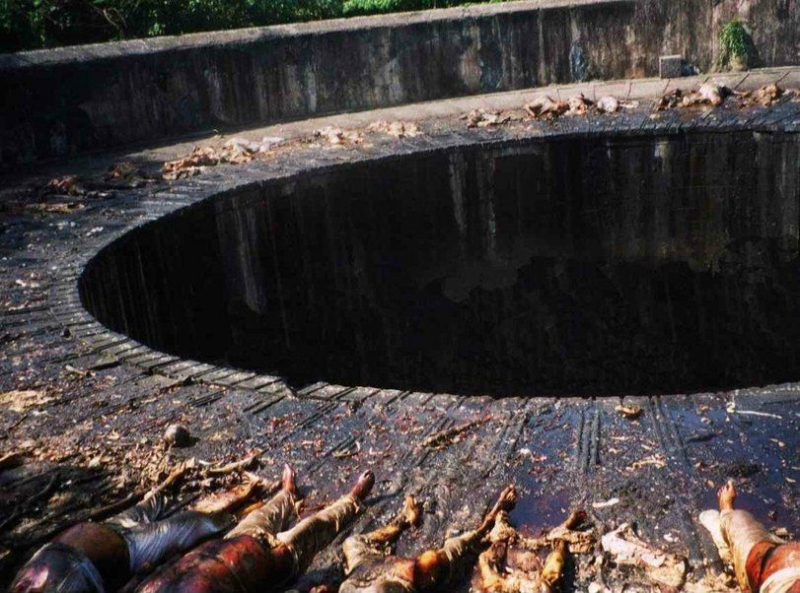
Photo: www.wattpad.com Video: MrCreepyPasta -
The Khaju Bridge in Isfahan, Iran, is one of the ancient bridges on the Zayanderud, the Iranian Plateau's biggest river. It connects the Khaju quarter on the north bank with the Zoroastrian quarter over the Zayanderud as both a bridge and a weir. It is situated at the end of Isfahan's Kamal Ismail Street.
In the past, the bridge operated primarily as a structure and a venue for public gatherings. It has been dubbed the city's most beautiful bridge. Arthur Upham Pope and Phyllis Ackerman, Persian art scholars and revivalists, are buried nearby in a mausoleum.
Khaju was built approximately 1650 by the Persian Shah Abbas under the Safavid Dynasty and served as a bridge, a dam, and a popular public meeting spot. It has 23 arches spanning 133 meters, however because to the Chadegan Reservoir dam erected in 1972 for a huge hydropower project, the Zayanderud is dry for most of the year. Unfortunately, much of the liveliness that was formerly in the city center has been subdued as a result of this.
Location: Isfahan, Iran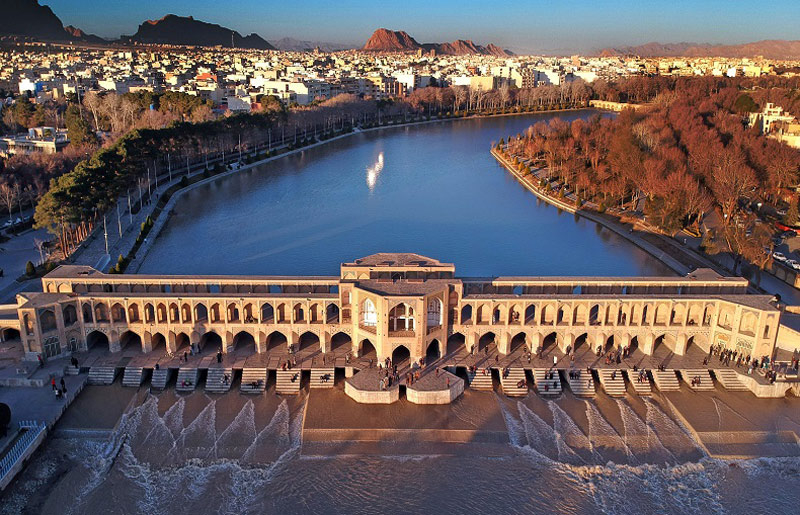
Photo: leaveabode.com Video: come with mehran































